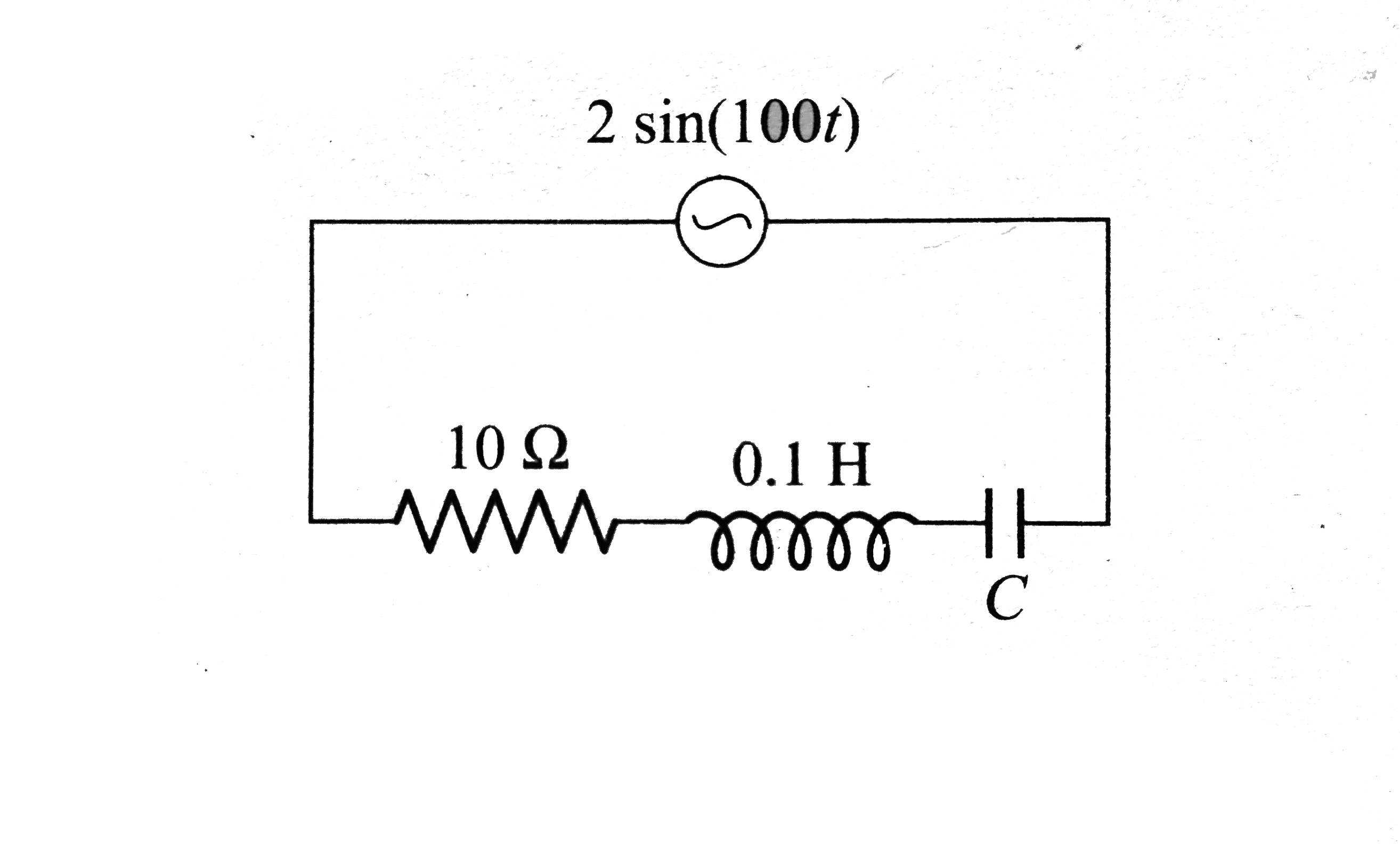If the power factor in an AC circuit changes from 13 to 19 then by what percent reactance will change (approximately), If resistance remains constant?
Increase by 200%
Decrease by 200%
Increased by 100%
Decrease by 100%
The correct Answer is:A
To solve the problem, we need to determine the percentage change in reactance when the power factor of an AC circuit changes from 13 to 19, while keeping the resistance constant.
1. Understand Power Factor and Phase Angle:
The power factor (PF) is defined as:
PF=cosϕ
where ϕ is the phase angle between the voltage and current. Given:
PF1=13andPF2=19
2. Calculate the Phase Angles:
From the power factor, we can find the phase angles:
cosϕ1=13⇒ϕ1=cos−1(13)
cosϕ2=19⇒ϕ2=cos−1(19)
3. Relate Reactance and Resistance:
The reactance X and resistance R are related through the tangent of the phase angle:
X=Rtanϕ
Therefore, we can express the reactance for both cases:
X1=Rtanϕ1
X2=Rtanϕ2
4. Calculate the Tangent Values:
Using the identity tanϕ=sinϕcosϕ and the Pythagorean theorem:
tanϕ1=√1−(13)213=√8913=2√23
tanϕ2=√1−(19)219=√808119=9√8081=√809
5. Express Reactance in Terms of Resistance:
Now substituting back into the equations for reactance:
X1=R⋅2√23
X2=R⋅√809
6. Calculate the Change in Reactance:
The change in reactance ΔX is:
ΔX=X2−X1=R⋅√809−R⋅2√23
7. Percentage Change in Reactance:
The percentage change is given by:
Percentage Change=ΔXX1×100=X2−X1X1×100
8. Substituting Values:
After substituting the values and simplifying, we find:
Percentage Change≈200%
Final Answer:
The reactance will change approximately by 200%.
The power factor (PF) is defined as:
PF=cosϕ
where ϕ is the phase angle between the voltage and current. Given:
PF1=13andPF2=19
From the power factor, we can find the phase angles:
cosϕ1=13⇒ϕ1=cos−1(13)
cosϕ2=19⇒ϕ2=cos−1(19)
The reactance X and resistance R are related through the tangent of the phase angle:
X=Rtanϕ
Therefore, we can express the reactance for both cases:
X1=Rtanϕ1
X2=Rtanϕ2
Using the identity tanϕ=sinϕcosϕ and the Pythagorean theorem:
tanϕ1=√1−(13)213=√8913=2√23
tanϕ2=√1−(19)219=√808119=9√8081=√809
Now substituting back into the equations for reactance:
X1=R⋅2√23
X2=R⋅√809
The change in reactance ΔX is:
ΔX=X2−X1=R⋅√809−R⋅2√23
The percentage change is given by:
Percentage Change=ΔXX1×100=X2−X1X1×100
After substituting the values and simplifying, we find:
Percentage Change≈200%
The reactance will change approximately by 200%.
Similar Questions
Knowledge Check
If the power factor changes from 12 to 14 then what is the increase in impedance in AC?
A0.2B0.5C0.25D1The power factor of an AC circuit having resistance (R) and inductance (L) connected in series and an angular velocity ω is
AR/ωLBR/(R2+ω2L2)1/2CωL/RDR/(R2−ω2L2)1/2The power factor of an R-L circuit is 1/√2 if the frequency of AC is doubled , what will be the power
A1√3B1√7C1√7D1√11
The power factor of an AC circuit is 0.5 . What will be the phase difference between voltage and current in this circuit ?
View SolutionIf y=x4−12 and if x changes from 2 to 1.99, what is the approximate change in y
View SolutionIf y=sinx and x changes from π/2 to 22/14 , what is the approximate change in y ?
View SolutionThe power factor of a CR circuit is 1√2. If the frequency of ac signal is halved, then the power factor of the circuit becomes
View SolutionThe power factor of the circuit in fig. is 1/√2. The capacitance of the circuit is equal to

View Solution
